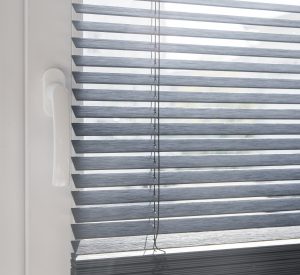Plastic windows require regular maintenance – is it on your mind?

Plastic windows have been the go-to option for quite a while. In addition to a wide range of designs and excellent utility features, the arguments in favour of plastic windows also include their extremely low maintenance requirements. Although many consider plastic windows to be completely maintenance-free, that’s not entirely the case. Even this type of windows will occasionally require your attention.
New plastic windows can significantly increase the comfort in your home, plus you can expect effective noise dampening on top of lower heat losses – and therefore lower utility bills. In addition, plastic windows come in a variety of colours, designs and sizes across different price ranges. All that’s left to do is choose the right indoor Venetian blinds for your new windows to enjoy many years without having to think about your windows. Yet beware! For your plastic windows to serve reliably, you shouldn’t simply take them for granted but instead spare them a thought from time to time. So how do you maintain plastic windows?

Quality plastic windows will last a very long time with some maintenance
Remove the protective film as soon as possible
If you’re one of those people who find pleasure in removing the foil from all your new purchases, then this is just the thing for you! You should remove protective foil from the plastic window frames as soon as possible following installation, or once there is no more construction or painting being done near the windows. Protective foil and films left on the windows attract dirt unnecessarily and will become quite tricky to remove after a while.
Pay attention to every detail after installation
After installing your new windows, it’s a good ideal to inspect them closely. Not just to admire the new windows, but more to spot and remove any defects. These can manifest as condensation, draft or water dripping from around the window frames. You should make any warranty claims on new windows as soon as possible.
Zoom in on drainage holes
In addition to regular cleaning of window frames and panes, you should pay attention to the joints and drainage holes. You can do a quick check to make sure they aren’t clogged on a regular basis. Clogged drainage holes can result in water accumulation that can leak onto the windowsill and underneath. Since we’ve already mentioned routine cleaning, let’s keep in mind that you should never use any abrasive cleaning products, wire brush or solvents on window frames. The same applies to indoor Venetian blinds.
Check window seals and fittings regularly
Fear not, it doesn’t take long to check the seals and fittings. It’s worth doing this regularly, but not too often. You’re good with carefully checking the window seals and fittings once a year. The seals should be flexible and tight; they shouldn’t be loose, twisted or torn. It’s likewise a good idea to lubricate them, ideally with silicone oil.
You should also inspect the moving parts of the fittings once a year and lubricate them, again using silicone oil. Pay attention to all friction surfaces and check whether opening and closing the window is “smooth” all the way.
… and what about shading technology?
Shading technology is another essential part of windows in flats and houses. The role of shading is most commonly performed by indoor Venetian blinds and, same as with plastic windows, their maintenance is not that difficult. Nevertheless, a little care of your Venetian blinds once in a while goes a long way. You can find more information on how to maintain bamboo Venetian blinds in this article.
